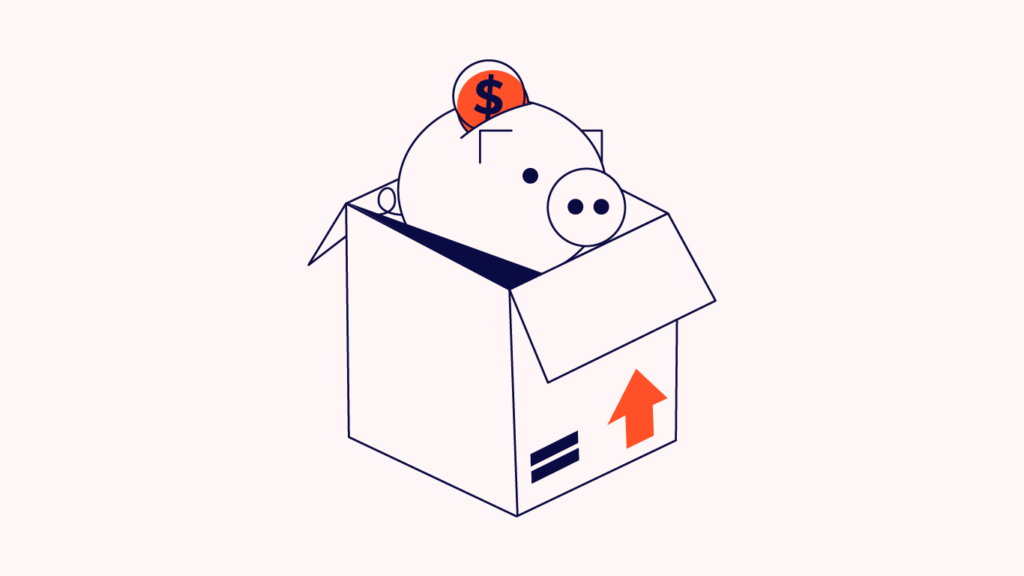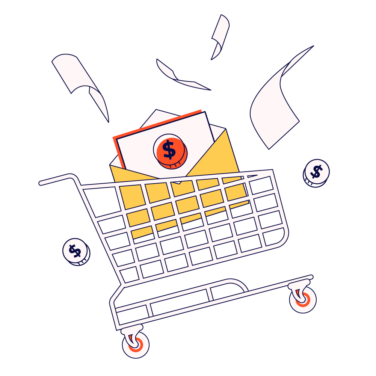Managing an online retail business requires you to track a lot of numbers. You track sales figures, inventory tallies, and social media analytics to determine your marketing effectiveness. There's another metric you should be monitoring called the average order value (AOV) that tells you a lot about the value of each sale and where your profits come from.
Learning how to calculate AOV—and work it into your normal inventory tracking—can make your online retail business more profitable.
What Is Average Order Value?
AOV is the average amount customers pay for items they buy from your store. You can work out the AOV for individual items you're selling (or combined orders) to better understand your customers’ shopping patterns on your retail site.
How to calculate AOV
Working out your AOV is simple. Choose a timeframe, usually a single month of sales, and divide the total sales revenue by the number of orders placed. The formula looks like this:
Revenue
__________________ = Average Order Value
Number of orders
If linear equations are less than revealing, it can help to have an example. Here's a table showing AOV figures sorted by month over the course of a year for a fictional business:
| Month | Gross Sales Revenue | Number of Orders | Average Order Value |
| January | $25,250 | 383 | $66 |
| February | $28,450 | 425 | $67 |
| March | $22,300 | 354 | $63 |
| April | $27,650 | 413 | $67 |
| May | $24,850 | 382 | $65 |
| June | $23,100 | 361 | $64 |
| July | $24,250 | 373 | $65 |
| August | $21,150 | 336 | $63 |
| September | $27,600 | 400 | $69 |
| October | $29,300 | 431 | $68 |
| November | $32,600 | 453 | $72 |
| December | $38,850 | 525 | $74 |
In this example, each month's sales totals are divided by the number of sales made, which generates a rounded AOV for each month. You can do this easily on a weekly, daily, quarterly, or annual scale, depending on what you're interested in tracking.
In this example, the average order value in the first quarter is $65.33, while the last quarter's AOV is $71.33.
Why it matters
AOV is one of the easiest ways a business owner can calculate the effectiveness of advertising spending, a store or website layout, and product pricing. Being able to track the effectiveness of a sales campaign or inventory management software is useful when you're building an ecommerce business.
Does It Matter How Much Each Order Is Worth?
Tracking your AOV has additional value on top of keeping a clear view of how your business is trending. Retailers use AOV figures for multiple reasons, especially to make intelligent changes in their operations.
Differentiating between profitable and unprofitable lines
Knowing your AOV gives you insight into which items sell well and which don't. Not every product is a winner.
When you track the AOV for individual product lines and combo packages, you can identify the following:
- Products that do well.
- Products you should promote.
- Products you should probably discontinue.
Identifying weak points in your marketing
Your AOV figures can also tell how well your marketing efforts are working. Starting an ad buy in one month that leads to a boost in traffic and an uptick in average order value is a good sign your campaign is working well.
Falling rates, however, could mean your efforts are ineffective or counterproductive. In this case, running your AOV at least monthly gives you rapid feedback you can apply before it's too late.
Guiding your supply priorities
It's no secret that supply chains aren't as stable as they used to be. Global events since 2019 have made supplies of microchips, lumber, and even cheese unreliable. In this environment, you may have to prioritize what gets made or delivered over other things in your inventory.
AOV calculations give you pinpoint accuracy on which items are getting you the highest margins and which ones you can leave on a stuck cargo ship for a few weeks.
Consider this fictional invoice for a clothier who has to import men's clothing from overseas. Some items have to get bumped for lack of materials or space. The AOV chart helps the manager make hard decisions:
| Item Description | Monthly Sales Volume | Monthly Revenue | AOV | Priority |
| Hats (Classic Trilby) | 250 | $11,250 | $45 | Low |
| Neckties (Silk) | 175 | $14,000 | $80 | Low |
| Shirts (Barrel Cuff) | 150 | $18,000 | $120 | Low |
| Coats (Single Breasted) | 120 | $42,000 | $350 | Medium |
| Coats (Double Breasted) | 80 | $32,000 | $400 | High |
| Shoes (Oxfords) | 50 | $25,000 | $500 | High |
| Shoes (Brogues) | 180 | $54,000 | $300 | Medium |
In this example, the importer facing a bottleneck should prioritize double-breasted coats and Oxford shoes while moving the more casual single-breasted coats and brogues down the list.
In a pinch, the hats, ties, and shirts can be delayed or cut out entirely to save the higher-value items. Despite the higher total revenue from the brogues and single-breasted coats, the AOV figures show they are less profitable.
AOV Creates Incentives for Your Team
Tracking your AOV also helps manage your team. If you have a salesforce of online marketers, the AOV figures they generate can guide your decisions about incentives, promotions, and rewards.
For example, imagine you have a sales and marketing team that works across multiple platforms and sales funnels. One team promotes your retail site on Twitter, and another principally uses Facebook and Instagram, while a third operates the company blog.
You can track links from these sources and run the AOV for customers who arrive from each of these sources. Here's another table, this time showing your sales by origin source:
| Source | AOV (First Quarter) | AOV (Second Quarter) | % Change |
| Company Blog | $82 | $90 | 9.76 |
| Facebook/Instagram | $67 | $76 | 13.4 |
| $78 | $71 | - 8.98 | |
| YouTube Channel | $65 | $72 | 10.77 |
| Ad Buys | $55 | $50 | - 9.1 |
This table shows that your company blog consistently draws the highest-value customers and that the trend has been increasing. Your Facebook/Instagram team is rapidly improving, as is your YouTube video team. By these numbers, the Twitter team is losing ground, while your traditional ad buys are driving poor traffic that's only getting worse over time.
Using these numbers, you can make smart decisions about where to invest your time and money. You might decide to cut your losses with the ad buys, restructure your Twitter tactics, and pay a performance bonus to your Facebook team. You might also use these figures to look into the demographics of your high-value customers.
How You Can Boost Your Average Order Value
Consistently posting a high AOV is a sign that you're getting the most out of every visitor your marketing attracts to your site. Changes to boost this metric should translate into a more efficient sales operation and better overall bottom-line figures. Here are some ways you can up your ecommerce site's game and get higher average order value numbers:
- Cross-selling: People who buy tie clips from you are probably also in the market for cuff links. Add a widget to your site to recommend related items the customer might want as part of the checkout process. Encourage impulse purchases.
- Upselling: If a customer likes the $10 fountain pens you're selling at a $2 profit, they might respond well to a popup suggesting the $30 fountain pen that generates a $6 profit. Upselling is a great way to turn a $50 customer visit into a $100 sale.
- Bulk discounts/coupons: You can sell a pair of wool socks on your site for $10 but also offer three pairs for $25. The $5 discount may be the deciding factor in selling two extra pairs of socks. Coupons also work this way.
- Free shipping/easy returns: Free or discounted shipping and no-hassle returns can be the decisive factor in a customer's decision to buy—and encourage larger orders on each visit.
Measure Your Success: AOV and Beyond
Knowing how to calculate average order value is the start of successfully managing your ecommerce analytics. Using this, you'll be able to optimize your order management processes to increase revenue. If customers buy more, it means you are serving up a good product. And that's the goal!
To learn more about how you can measure your ecommerce success, sign up for The Ecomm Manager newsletter—and stay up to speed on everything that matters for your business.


